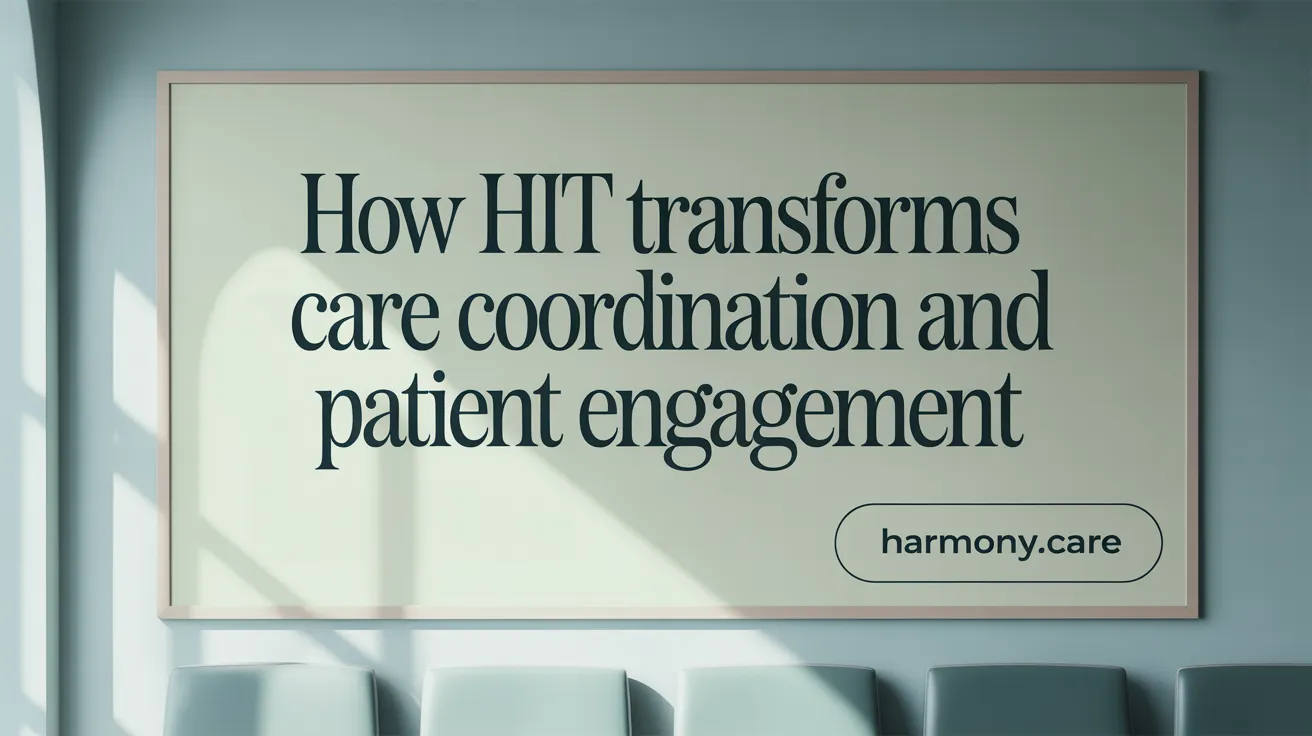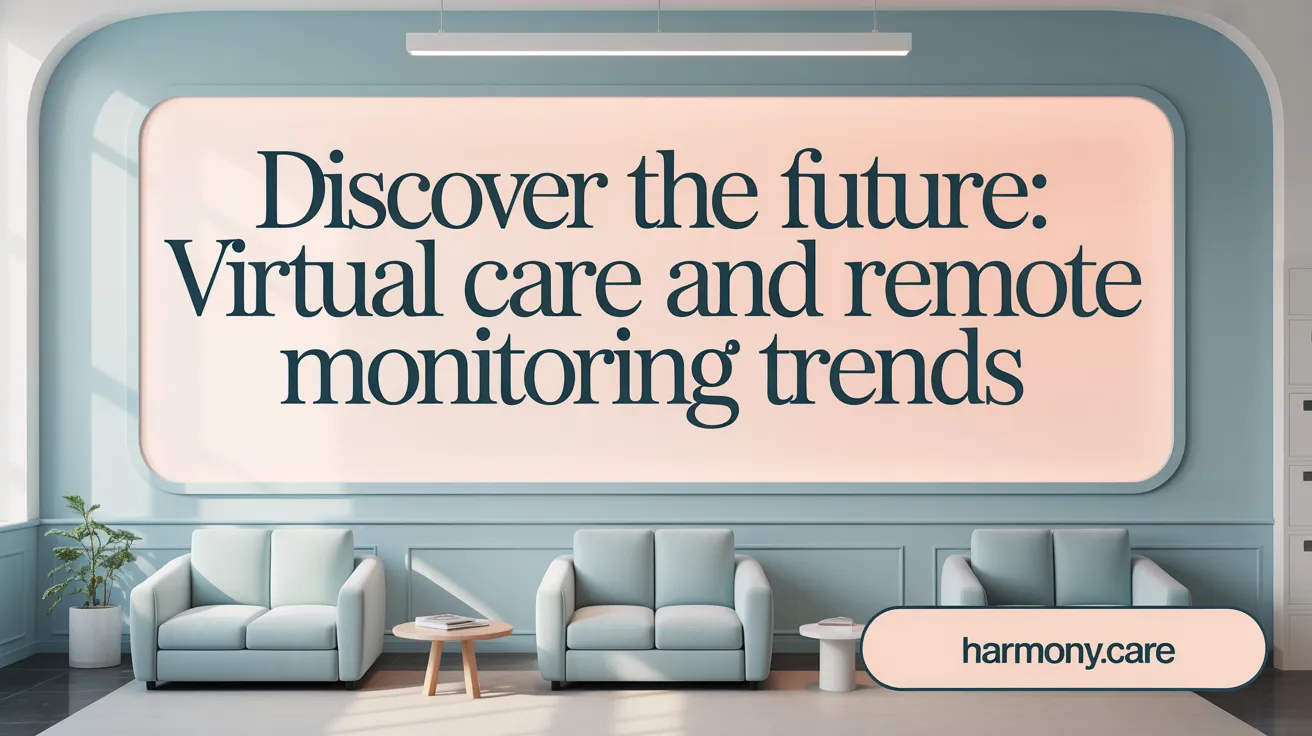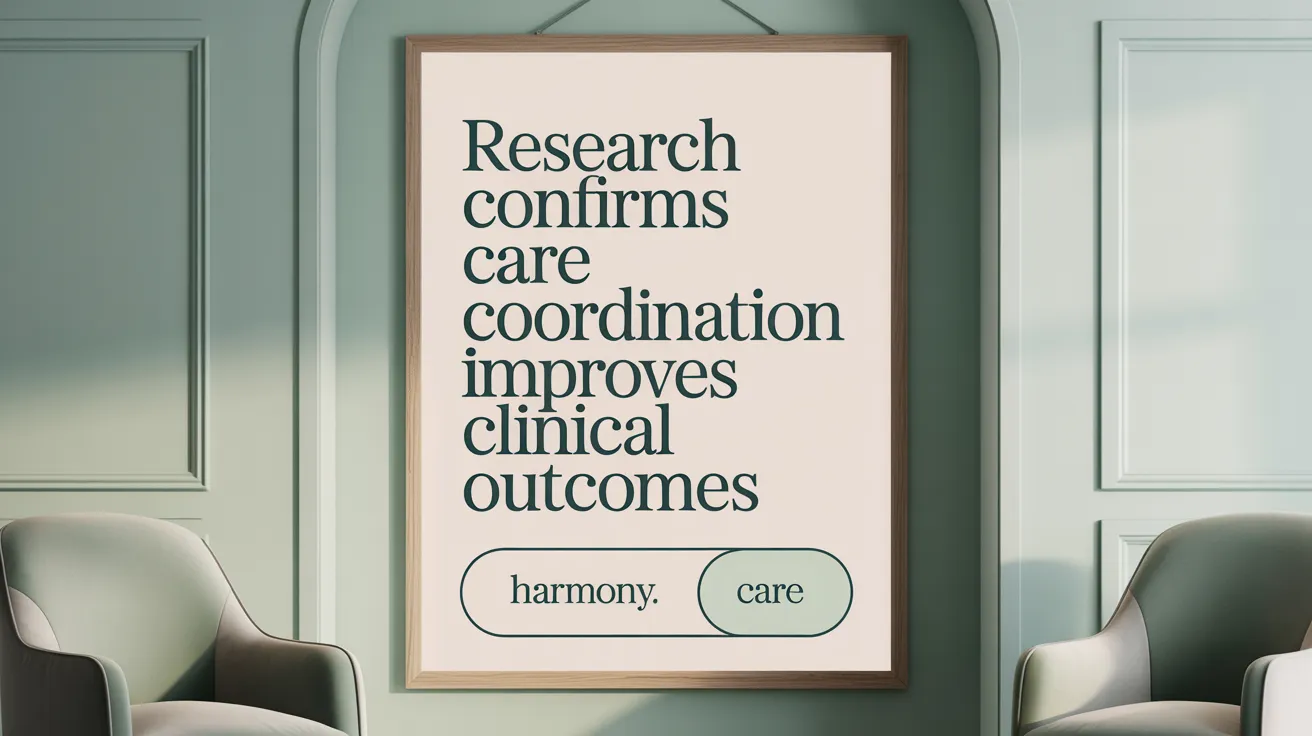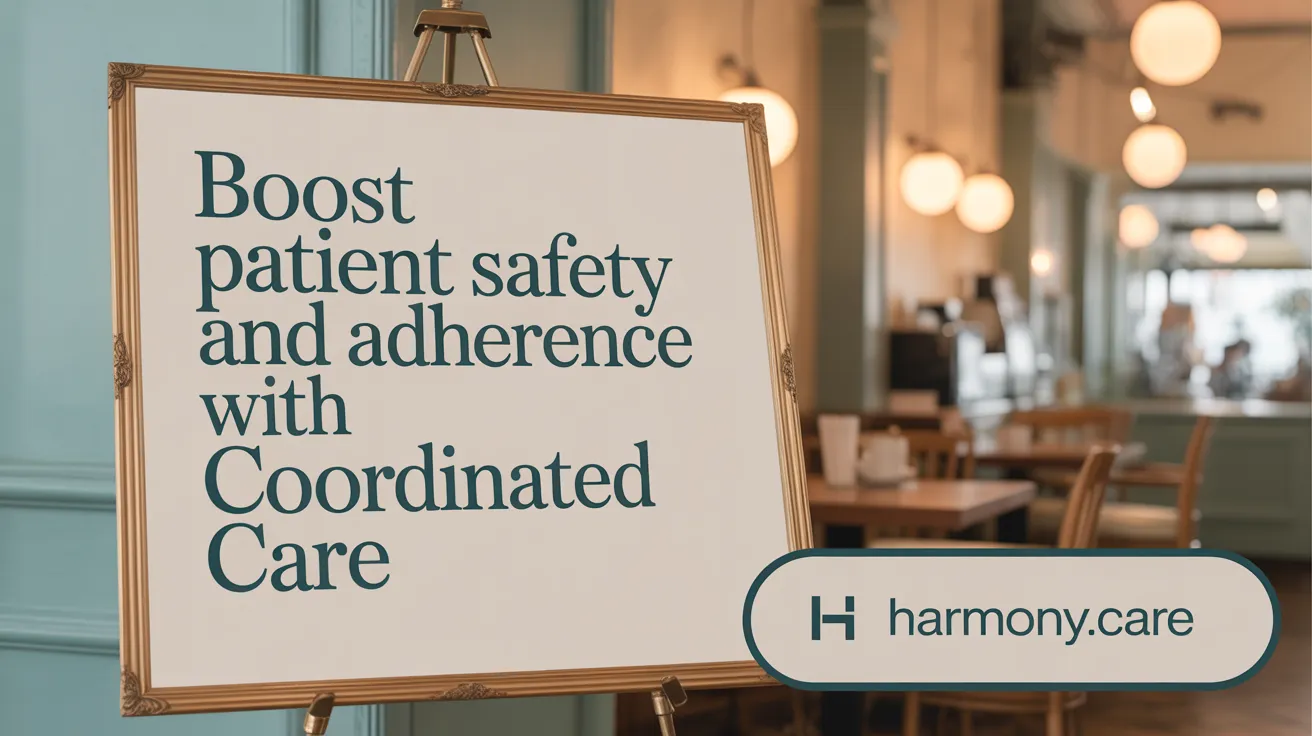Understanding the Impact of Coordinated Care on Health Monitoring
Care coordination programs are revolutionizing healthcare by bridging gaps between providers and patients, thereby improving health monitoring compliance and patient outcomes. This article explores the extensive statistical evidence supporting these programs, highlighting their effectiveness, the role of health information technology, virtual care trends, and the broader benefits they offer to healthcare systems and patients alike.
Statistical Evidence Linking Care Coordination to Improved Health Monitoring Compliance

What is the statistical evidence for the impact of care coordination programs on health monitoring compliance?
Research consistently shows that effective care coordination has a measurable positive impact on health monitoring adherence and clinical outcomes. Data from various programs indicate that beneficiaries who report better coordination of care tend to have higher performance scores on critical clinical quality measures such as those tracked by HEDIS. These differences are often greater than 5 percentage points when comparing groups with the highest versus lowest levels of care coordination.
For example, improved care coordination is associated with better rates of breast and colorectal cancer screening, LDL-C screening for cardiovascular health, and management of chronic diseases like diabetes, osteoporosis, and rheumatoid arthritis. Such associations aren’t merely anecdotal; they are supported by strong statistical correlations.
Implementation of health information technology (HIT) further boosts these efforts. HIT facilitates seamless communication among care providers and improves patient engagement. Use of HIT for activities like coordinating enabling services and engaging patients correlates with higher rates of adult screening and diabetes control, demonstrating its importance in enhancing health monitoring compliance.
Remote patient monitoring (RPM), a recent technological advancement, offers compelling evidence of its efficacy. The adoption of RPM devices has reduced hospital readmissions by up to 76%, increased patient satisfaction to over 90%, and improved medication adherence by approximately 15-20%. These outcomes suggest that RPM supports ongoing health monitoring, particularly for chronic disease management.
Collectively, the evidence indicates that care coordination—especially when integrated with HIT and RPM—significantly improves health monitoring adherence. This not only leads to better preventive care and chronic disease management but also reduces emergency visits and hospitalizations, ultimately improving overall patient health outcomes.
Effectiveness of Care Coordination in Enhancing Patient Health Outcomes
How effective are care coordination programs in improving patient health outcomes?
Care coordination plays a crucial role in improving the overall quality and effectiveness of healthcare. Studies show that when patients report better care coordination, their clinical outcomes tend to improve significantly. Specifically, improved care coordination is linked to higher performance on many important clinical quality measures, such as cancer screenings, cholesterol monitoring, and diabetes management.
The association between better coordination and clinical performance is generally strong. Performance differences of more than 5 percentage points on these metrics have been observed when comparing populations with the highest and lowest reported levels of coordination. For example, patients with better-coordinated care are more likely to receive timely breast and colorectal cancer screenings, LDL-C screenings for cardiovascular health, and effective diabetes maintenance.
Beyond these measures, care coordination also reduces hospital readmissions and emergency department (ED) visits. For instance, data indicate a 24% reduction in ED returns within 7 days and a 13% decline in returns within 30 days among patients experiencing coordinated care.
Furthermore, care coordination improves patient engagement and satisfaction. Remote patient monitoring (RPM) programs, a form of care coordination, have shown remarkable results — increasing patient adherence to care plans by over 70% and satisfaction rates to more than 90%. Patients report that better coordination helps them navigate their care more efficiently and feel more confident in managing their health.
Evidence from various initiatives, including national programs supported by the Agency for Healthcare Research and Quality (AHRQ), confirms that comprehensive care coordination can lead to reduced healthcare costs, fewer missed appointments, and better chronic disease management.
Overall, while existing data strongly support the positive impact of care coordination, ongoing research is needed to further quantify its full benefits and address gaps related to rigorous evaluations. Still, it is clear that coordinated efforts improve not just clinical outcomes but also patient experience and system efficiency.
Role of Health Information Technology in Supporting Care Coordination

How does health information technology improve patient engagement and enable services?
Health information technology (HIT) is central to modern care coordination efforts. It allows healthcare providers to communicate more effectively with patients through portals, telehealth platforms, and mobile apps. Currently, over 81% of health centers engage patients using HIT tools, which helps in managing enabling services such as scheduling, reminders, and health tracking. These digital solutions foster active patient participation, making it easier to follow through on treatment plans, monitor health status, and access educational resources. As a result, patient satisfaction and adherence to care protocols see significant improvements.
What impact does HIT have on clinical process measures?
Implementing HIT significantly influences clinical quality outcomes. For example, health centers utilizing electronic health records (EHRs) and health information exchanges (HIEs) often report higher performance on process measures like adult screenings and diabetes management, including HbA1c control. Data shows that patients in settings with advanced HIT are more likely to receive timely screenings and follow-up care. The integration of HIT has been linked to performance differences exceeding 5 percentage points on HEDIS scores, particularly in preventive and chronic disease management. These improvements lead to better health outcomes and reduced disparities.
What are the challenges and advantages of integrating health IT in care coordination?
While HIT offers numerous benefits, integrating it into routine care presents challenges such as interoperability issues, ensuring data privacy, and clinician training requirements. Despite these hurdles, the advantages are substantial. HIT enhances the accuracy and timeliness of information sharing, reduces duplication of services, and streamlines coordination across various providers. Larger health centers and those with recognized patient-centered medical homes (PCMH) are more likely to harness these tools effectively, resulting in higher quality care. Ultimately, HIT supports a cohesive approach that links healthcare and social services, improving patient access, safety, and engagement.
Healthcare Efficiency, Patient Engagement, and Cost Savings Through Care Coordination
What are the benefits and impacts of care coordination programs on healthcare efficiency, patient engagement, and cost savings?
Care coordination programs play a vital role in improving overall healthcare delivery. They help reduce unnecessary emergency department (ED) visits and hospital readmissions by ensuring that patients receive timely, organized care tailored to their needs. For example, studies show that effective care coordination can lead to a 24% reduction in ED returns within a week and a 13% decrease within 30 days.
One of the main ways these programs boost efficiency is by streamlining referral processes. Often, only about 35% of referral attempts result in documented appointments, leading to delays and frustration. Care coordination improves these processes by guiding patients through their care pathways, which increases the likelihood of timely follow-up and reduces unnecessary delays.
This approach also significantly cuts healthcare costs. It is estimated that approximately $150 billion is spent annually in the U.S. on missed medical appointments alone. Implementing proper care coordination protocols reduces no-shows to around 8%, substantially lowering wasteful spending. It also enhances continuity of care, which translates into better disease management, fewer hospitalizations, and decreased reliance on high-cost emergency services.
Moreover, integrated care efforts contribute to greater patient engagement. Patients involved in well-coordinated care tend to be more satisfied and active participants in their health management. Technologies such as health information technology (HIT) and remote patient monitoring (RPM) support this by providing patients with better access to their health data and enabling proactive management.
In summary, care coordination leads to more efficient healthcare systems by reducing redundant or unnecessary services, fosters deeper patient involvement, and substantially cuts costs. As healthcare complexity grows with chronic disease prevalence, such programs are essential for achieving sustainable, patient-centered care.
Emerging Trends in Virtual Care and Remote Patient Monitoring

What trends and data exist related to virtual care management and remote patient monitoring initiatives within care coordination?
The landscape of virtual care and remote patient monitoring (RPM) has experienced significant growth over recent years, driven by advances in health technology and supportive policies. The global RPM market, valued at approximately $14 billion in 2023, is forecasted to expand to about $42 billion by 2028, reflecting an annual growth rate of more than 25%. This surge is largely fueled by expanded applications in hospital-at-home programs, chronic disease management, and specialty care, with healthcare reimbursement policies, such as CMS codes, making remote services financially viable.
One of the key technological trends involves the integration of artificial intelligence (AI) and Internet of Things (IoT) devices. These innovations enhance predictive analytics, allowing providers to detect health deterioration early and personalize treatment strategies effectively. The use of wearable health devices, with over 440 million expected to be in use globally by 2025, exemplifies this trend.
Adoption among healthcare providers has risen sharply, with over 81% using RPM in 2023. Patients display high acceptance, with more than 80% showing favorable attitudes towards remote monitoring. The benefits include increased patient engagement—levels reaching up to 80%—improved medication adherence, and reductions in hospital readmissions by as much as 76%.
Hybrid care models, which combine in-person visits with virtual services, are increasingly preferred for their ability to improve health outcomes and patient satisfaction. Despite these advances, challenges such as ensuring data security, integrating new workflows, and addressing usability concerns—particularly among elderly populations—remain priorities. Nonetheless, ongoing efforts to improve interoperability, cybersecurity, and technology usability continue to support the expansion and effectiveness of virtual care initiatives.
| Aspect | Data & Trends | Supporting Details |
|---|---|---|
| Market Growth | Expected to reach $42 billion by 2028 | CAGR > 25% from 2023 |
| Provider Adoption | Over 81% of healthcare providers use RPM | Rapid increase driven by policy and technology |
| Patient Acceptance | 80% favor RPM | High engagement and satisfaction levels |
| Technological Advances | AI, IoT, Wearables | Enhance predictive analytics and monitoring |
| Impact on Outcomes | Reduce readmissions up to 76% | Improve medication adherence and patient safety |
| Challenges | Data security, usability, interoperability | Ongoing improvements needed |
As virtual care continues to evolve, these trends suggest a sustained shift towards more integrated, patient-centered, and technology-enabled healthcare delivery systems.
Research Findings Validating Care Coordination's Impact on Clinical Care Measures

What research findings support the effectiveness of care coordination programs in clinical care measures?
Research indicates that care coordination programs significantly improve various clinical quality measures within healthcare. A comprehensive study found that beneficiaries who reported better care coordination also received superior clinical care, especially for care processes involving the organization of patient activities and information sharing among providers.
Specifically, higher patient-reported care coordination was linked to notable improvements in 9 of 13 HEDIS clinical quality measures. These included critical aspects such as breast and colorectal cancer screenings, LDL cholesterol screenings for cardiovascular health, and multiple diabetes care metrics like HbA1c and LDL-C control. Patients experiencing better coordination also showed enhancements in osteoporosis management and rheumatoid arthritis therapy.
The differences in performance between patients reporting the highest and lowest levels of care coordination often exceeded 5 percentage points, with some measures seeing improvements of over 10 points. These associations remained strong even after adjusting for various factors, as confirmed by mixed logistic regression analyses.
Furthermore, these findings support the hypothesis that effective care coordination not only improves process measures but also leads to better overall health outcomes, including reduced hospitalizations. The evidence underscores the importance of systematic efforts—such as individualized care plans, active referrals, and enhanced communication—in achieving high-quality clinical care.
In summary, robust research demonstrates that efficient care coordination plays a vital role in elevating clinical care standards, leading to measurable improvements in patient health and satisfaction.
Enhancing Health Safety and Monitoring Adherence Through Coordinated Care

How do care coordination programs improve health safety and monitoring adherence?
Care coordination initiatives play a crucial role in enhancing patient safety and ensuring adherence to health monitoring protocols. By promoting seamless communication among healthcare providers, these programs reduce the risk of diagnostic errors, procedural mistakes, and medication inaccuracies. They leverage technology such as health information technology (HIT) systems, remote patient monitoring (RPM), and telehealth platforms to stay connected with patients remotely.
RPM, for example, has been shown to cut hospital readmissions by up to 76% and increase patient engagement to over 80%. It helps providers monitor vital signs like blood pressure and blood sugar regularly, alerting them to potential issues before complications develop. Patients also feel more empowered as they receive timely educational materials and reminders, fostering better compliance with treatment plans.
Structured discharge procedures and standardized handoff processes ensure smooth transitions from hospital to home, reducing preventable readmissions and medication errors. Initiatives such as the Re-Engineered Discharge (RED) and the I-PASS handoff bundle have proven effective, decreasing emergency visits and adverse events.
Overall, these collaborative, tech-enabled strategies strengthen clinical safety, improve health outcomes, and promote consistent adherence to prescribed care, making health services safer and more effective for chronic and acute conditions alike.
Educational Insights and Data Demonstrating Improved Compliance via Care Coordination
How do educational insights and program data demonstrate improved health monitoring compliance through care coordination?
Educational insights and program data play a crucial role in illustrating how care coordination enhances patient adherence to health monitoring protocols. By leveraging detailed health data and analytics, healthcare providers can deliver targeted education tailored to individual patient needs. This approach helps patients understand the importance of consistent monitoring, such as blood pressure or blood sugar levels, and how it impacts their overall health.
Analytics tools, including dashboards and machine learning models, enable providers to identify at-risk patients early. These insights prompt proactive interventions, allowing care teams to develop personalized care plans that are more likely to succeed. For instance, systematic assessments of patient conditions help customize education and follow-up strategies, ensuring patients receive appropriate support at critical points.
Telemedicine and remote patient monitoring (RPM) further reinforce these efforts by maintaining continuous engagement with patients. During the COVID-19 pandemic, these technologies proved especially vital, reducing unnecessary emergency visits and keeping patients connected with their care teams.
Ultimately, integrating educational insights with comprehensive data analysis strengthens care coordination. This integrated approach not only encourages patients to adhere to monitoring routines but also results in tangible improvements in health outcomes, including lower hospital readmission rates and better disease management.
Conclusions on the Transformative Role of Care Coordination Programs
The accumulated evidence underscored throughout this article reaffirms care coordination programs as pivotal to advancing health monitoring compliance and improving patient outcomes. Supported by robust research, technological integration, and evolving virtual care modalities, these programs drive healthcare forward by enhancing safety, efficiency, engagement, and cost-effectiveness. As healthcare systems continue to embrace coordinated approaches bolstered by innovative tools like remote patient monitoring and health information technology, patients and providers alike stand to benefit from more personalized, accessible, and effective care. Future advancements and comprehensive evaluations will further illuminate the full potential of care coordination in shaping optimal health monitoring practices and clinical excellence.
References
- Patient-Reported Care Coordination is Associated with ...
- Improving Healthcare Safety by Enhancing Care ...
- Using Health IT to Coordinate Care and Improve Quality in ...
- How Care Coordination Improves Patient Satisfaction And ...
- A Promising Model for Health and Social Care Coordination
- 27 Remote Patient Monitoring Statistics Every Practice ...
- Care Coordination Models for Chronic Disease Management
- Key Remote Patient Monitoring Statistics You Should Know
